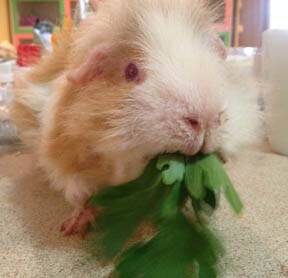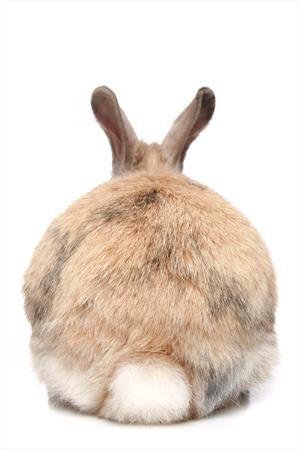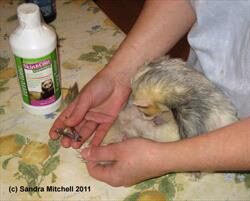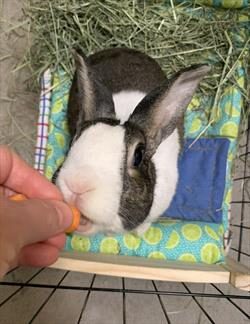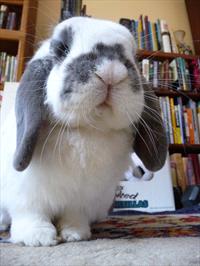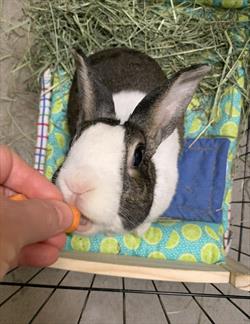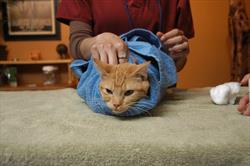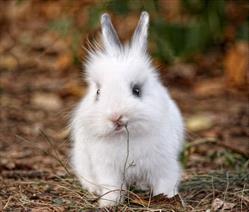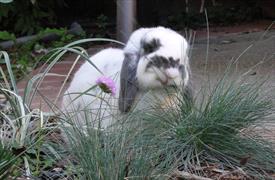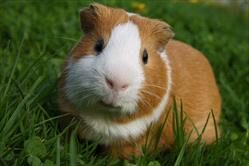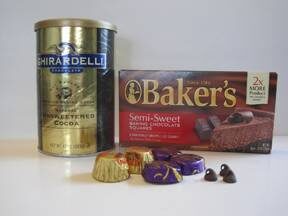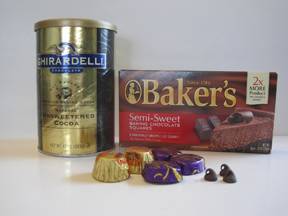Guinea Pigs as Pets
The guinea pig, or cavy, is a rodent native to the Andes Mountain area of South America. They were first domesticated by the Andean Indians of Peru who used them as a food source and as a sacrificial offering to Incan gods. During the 16th century, Dutch explorers introduced guinea pigs to Europe where they were selectively bred by fanciers. The guinea pig entered the research laboratory in the 18th century and have since made significant contributions to the scientific community.

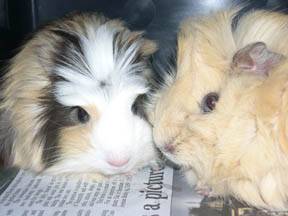
Although often considered a children’s pet, guinea pigs do require good attention to hygiene and have specific dietary requirements to maintain health. The more time an owner is willing to invest in a guinea pig, the more its true personality will shine through. Many guinea pigs are now kept indoors, spending considerable amounts of time interacting with their owners.
Through selective breeding efforts, guinea pigs are found in an array of colors and coat types from which to choose. Four primary varieties are commonly encountered in the pet industry. The Shorthair or English is characterized by having a uniformly short hair coat. The Abyssinian has whorls or rosettes in their short, rough, wiry coat. The Silky is a large variety distinguished by its medium length silky hair. The Peruvian is recognized by its long, silky hair. All types are commonly kept as pets.
Guinea pigs generally live about five to seven years. Larger than other rodents, the adult average weight ranges from 900 to 1200 grams (2 to 2.6 pounds).
Diet
Like many animals, guinea pigs determine early in life what foods they prefer, based on their eating experiences. This is why it is a good idea to gradually expose young guinea pigs to a variety of foods once they are weaned so later they will have a broader range of food choices.
Guinea pigs are herbivores and in their natural biology grasses are the most prominent part of their diet. Grasses are abrasive to teeth, which is why the guinea pig evolved with both incisors (front teeth) and cheek teeth that grow continuously throughout life.

Good quality grass hay should be available at ALL times, and should compose at least 80 percent of the guinea pig’s diet. Any grass hay is sufficient, including timothy, orchard grass brome and others. Many guinea pigs prefer one variety of grass hay over others. Avoid the use of alfalfa, which is not a grass but rather a legume (like peas and beans) and is generally too high in calories (which can lead to a tubby little pig) and calcium for the average pet guinea pig’s dietary needs. Excess dietary calcium can predispose to bladder stones. Alfalfa hay, can however, be used with nursing or young growing guinea pigs for the time in which their nutritional needs are higher. Grasses also provide a variety of nutrients as well as indigestible fiber, which keeps the intestinal tract moving along at a normal speed, and digestible fiber that is used by the bacteria in the large cecum to produce such things as vitamin B and amino acids, which are used by the guinea pig. Guinea pigs with a high fibre intake are much more resistant to gastrointestinal upset.
Like primates (including humans), guinea pigs do not produce their own vitamin C. Vitamin C deficiency leads to scurvy, the symptoms of which include poor appetite, swollen, painful joints and ribs, reluctance to move, poor bone and teeth development, and spontaneous bleeding especially from the gums, into joints, and in muscle. If left untreated, this disease can be fatal especially to rapidly growing young and pregnant females. In addition, subclinical deficiencies often predispose animals to other diseases.
Fortunately it is easy to provide your guinea pig with adequate vitamin C through food, aiming to give between 10 and 25 mg (0.35 to 0.88 oz) vitamin C daily. The following chart gives examples of the quantity of various required to meet maintenance.
The volumes listed in this table are given as grams because of the small sizes.
| Food source | Mg of vitamin C per 100 gram food source | Grams of food source required for: | ||
| Maintenance @ 25 mg/day (0.88 oz) | Stressed (sick or pregnant) @ 50 mg/day (1.76 oz) | Vitamin C Deficient @ 100 mg/day (3.5 oz) | ||
| Parsley | 131.9 | 18.95 | 37.9 | 75.8 |
| Kale | 120 | 20.83 | 41.67 | 83.33 |
| Kiwifruit | 95 | 26.32 | 52.63 | 105.26 |
| Broccoli | 90.5 | 30.54 | 61.07 | 122.14 |
| Brussel sprouts | 86 | 29.08 | 58.17 | 116.34 |
| Peas (podded) | 59.54 | 41.98 | 83.97 | 167.95 |
| Strawberries | 59.2 | 42.17 | 84.33 | 168.66 |
| Oranges | 53.9 | 46.38 | 92.76 | 185.51 |
| Pineapple | 47.8 | 52.3 | 104.6 | 209.21 |
| Chinese cabbage (pak choi) | 45 | 55.6 | 111.21 | 222.41 |
| Peas (green) | 41.2 | 60.73 | 121.46 | 242.91 |
| Beet greens | 30.3 | 82.48 | 164.96 | 329.91 |
| Mango | 28.4 | 88.03 | 176.06 | 352.11 |
| Spinach | 28.4 | 87.97 | 175.94 | 351.88 |
| Coriander leaves | 27.3 | 91.57 | 183.13 | 366.27 |
| Raspberries | 26.5 | 94.25 | 188.49 | 376.98 |
| Lettuce (cos) | 23.9 | 104.45 | 208.92 | 417.85 |
| Blackberries | 21.2 | 117.83 | 235.66 | 471.31 |
| Turnip | 20.8 | 120 | 240 | 480 |
| Basil – fresh | 18.2 | 137.29 | 274.58 | 549.17 |
| Melon (honeydew) | 17.9 | 140 | 280 | 560 |
| Squash (zucchini) | 17.85 | 140.08 | 280.15 | 560.3 |
| Parsnip | 17.46 | 143.17 | 286.34 | 527.69 |
| Radish | 14.7 | 170.27 | 340.54 | 681.08 |
| Cranberries | 13.1 | 190.31 | 380.62 | 761.25 |
| Tomatoes | 12.6 | 198.3 | 396.6 | 793.2 |
| Beans – snap | 12.3 | 203.05 | 406.09 | 812.18 |
| Grapes | 11.2 | 222.93 | 445.86 | 891.72 |
| Blueberries | 9.4 | 264.71 | 529.41 | 1058.82 |
| Plums | 9.4 | 265.7 | 531.4 | 1062.8 |
| Pumpkin | 9.1 | 274.57 | 549.13 | 1098.27 |
| Bananas | 8.9 | 280.61 | 561.22 | 1122.45 |
| Watermelon | 8.2 | 305.56 | 611.11 | 1222.22 |
| Alfalfa | 8 | 301.12 | 602.24 | 1204.48 |
| Cherries (sweet) | 6.9 | 360.36 | 720.72 | 1441.44 |
| Corn | 6.6 | 379.75 | 759.49 | 1518.99 |
| Peaches | 6.5 | 384.62 | 769.23 | 1538.46 |
| Carrots | 6 | 416.67 | 833.33 | 1666.67 |
| Asparagus | 5.6 | 446.43 | 892.86 | 1785.71 |
| Nectarine | 5.3 | 467.48 | 934.96 | 1869.92 |
| Apples with skin | 5 | 533.71 | 1067.42 | 2134.83 |
| Pears | 4.2 | 590.28 | 1180.56 | 2361.11 |
| Bean – Fava (in pod) | 3.8 | 654.76 | 1309.52 | 2619.047 |
| Celery | 3.1 | 811.86 | 1623.71 | 3247.42 |
| Lettuce (Iceburg) | 2.8 | 887.5 | 1775 | 3550 |
| Cucumber | 2.3 | 895.72 | 1791.44 | 3582.89 |
The total amount of fresh foods given in a day should be around one-quarter to one-half cup (torn or shredded and packed in the measuring container), so the above chart should be used to select foods with concentrated vitamin C. When testing out new fresh foods, add one every three to four days to allow the intestinal tract to adjust and give a fair trial to see if the guinea pig will eat it.
Guinea pig pellets can be given to your pet in limited quantities. Please use guinea pig pellets, which have additional vitamin C, and not rabbit pellets. Read the label and use a brand that is grass-hay based and not alfalfa based, if at all possible. Also look at the date that the food was produced and try to buy food that is no more than 3 months (90 days) past that date. If the food is too old, the vitamin C levels will have decreased dramatically. Watch your little friend’s weight carefully and adjust the pellet amounts downward if there is too much weight gain.
Food is not just something we put in our bodies for nutrients, but it is also an environmental enrichment. The sight, smell, taste, and texture of food is mentally stimulating to all animals. Even the sound of the food preparation provides a joyful anticipation. Many a guinea pig care provider knows the sound of a guinea pig squealing with delight whenever the refrigerator door opens! Try putting the hay or fresh food in places such as hidden in little crumpled bits of paper, empty toilet paper or sections of paper towel rolls or non-toxic baskets just for fun! Try putting pellets in a small hollow plastic ball with small holes drilled in the side that are slightly larger than a pellet; as the pig rolls it around with his nose, he will get to eat in the process! The hay can be provided in a hay feeder or put in the corner of the cage. Even better, put it in an “edible” basket or cardboard box for more fun!
Foods to completely avoid are the high starch foods such as peas, beans, corn, nuts, cakes, cookies, cereal, grains, breads, and so on. These foods can create a serious imbalance in the normal bacteria in the intestinal tract and lead to potentially fatal disease. Although very small amounts of these foods can tolerated, guinea pigs can get “addicted” to them to the point they don’t want to eat healthier foods. Therefore, it is best to just avoid them all together.
And let us not forget water, which is vital to good health. Fresh, clean water should always be available either in a sipper bottle or a heavy crock that prevents spillage. Guinea pigs like to play with their water bottles, so make sure you check the bedding under the bottle for moisture and change it frequently. Sipper bottles will need to have the nipple regularly checked for adequate function, and cleaned to ensure good hygiene. Do not add any medications or vitamins to the water as it will change the taste and your guinea pig may not drink as much. Not drinking enough water can lead to chronic dehydration and potentially diseases such as kidney disease and kidney or bladder stones.
Diseases
Bacterial Enteritis
A number of bacteria are capable of causing infections of the gastrointestinal tract in guinea pigs. Some of these bacteria are introduced through contaminated greens or vegetables or in contaminated water. One of the most common bacteria that causes intestinal disease in guinea pigs is Salmonella spp. Other bacterial species that may cause diarrhea and enteritis are Yersinia pseudotuberculosis, E. coli, Arizona spp., and Clostridium spp. In addition to diarrhea, other common symptoms associated with intestinal disease are lethargy and weight loss. In other cases, sudden death may occur before theses signs are seen.

A veterinarian may elect to use aggressive antibiotic therapy and supportive care to treat this condition. A bacterial culture of the patient’s stool with antibiotic sensitivity will greatly assist the veterinarian in choosing an appropriate antibiotic.
Bacterial Pododermatitis (Bumblefoot)
Severe footpad infections are common among guinea pigs housed on poor substrate, especially cages with wire flooring. Poor hygiene, including fecal soiling, makes the problem bigger. Symptoms of this condition include swelling of the affected feet, lameness, and reluctance to move. Sometimes the guinea pigs are so used to the chronic pain that they do not seem overly affected but this is not the case. Improved sanitation and better substrate are the initial steps in correcting the problem. In addition, the feet themselves should be treated by a veterinarian. Topical dressing with an and periodic bandaging is often required. Depending on the severity of the damage, oral antibiotics may also be necessary. Pain relief is usually needed. Therapy may have to be carried out for a lengthy period of time to get full recovery. Unfortunately, a consequence of this condition is arthritis. Severe cases can even have bone infection, which is very serious.
Fur Loss
Fur loss is a common problem in guinea pigs. Hair loss or hair thinning can occur for a number of reasons. It is common among sows with cystic ovarian disease, or those that are repeatedly bred. Weakened, newly weaned juvenile guinea pigs can also be affected. Fur loss problems are also seen with certain fungal diseases and external parasite infestations. In some groups, barbering (removing hair) of subordinate pigs by dominant ones can happen.
Lice and mites are the most common external parasites of guinea pigs. Mites are microscopic, spider-like organisms that infest the top layers of the skin in affected animals. Mite infestations are usually more severe than lice. A specific mite, Trixacarus cavie, causes serious infestations in pet guinea pigs. This sarcoptic mite lives in the outer layers of skin causing an intense itching and scratching with considerable hair loss. In some cases, they don’t itch or scratch but only have hair loss and crusting of the skin. In other cases, the infestation and irritation is so severe that the pet causes significant self-inflicted wounds, and can even seizure with handling.
A veterinarian can diagnose this mite infestation by performing skin scrapings of affected areas and viewing them under the microscope. There are several treatment options, ranging from pills to injectable to topical medication. Your veterinarian will prescribe an appropriate one for your situation. In the meantime, if wood shavings are used as bedding or litter, it should be replaced with paper toweling to reduce handling of your pig and make the enclosure soft and comfortable. Ensure adequate vitamin C levels in the diet. Trixacarus cavie mites can be zoonotic.
Lice are tiny, wingless, flattened insects that live within the hair coats of infested animals. Both adults and eggs are found attached to hair shafts of affected pets. Lice infestations often go unnoticed. However, heavy infestations are usually accompanied with excessive itching, scratching, and some hair loss. Scabbing on or around the ears may also be evident. Guinea pigs are parasitized by two types of biting lice. Both irritate and abrade the skin’s surface and feed off the bodily fluids that exude through the superficial wounds they create.
A veterinarian can confirm the diagnosis of lice infestation by examining the hair coat as well as microscopic examination of hairs from affected animals. Treatment is usually in the form of an insecticidal shampoo that is prescribed by the veterinarian.
Lice transmission occurs through direct contact with infested guinea pigs. Therefore, pet guinea pigs are not likely to have this parasite unless they had previous exposure to lice-infested guinea pigs. For your pet’s sake, be sure that any guinea pig she comes in contact with is healthy, and free of this and other parasites.
Fungal skin disease is common, and is seen as a scaly, furless area that is usually circular. It can be diagnosed with a fungal culture. Treatment involves topical and/or oral medication, as well as decontamination of the environment. This condition can affect humans as well.
Heat Stress (Stroke)
Guinea pigs are quite susceptible to heat stroke, particularly those that are overweight and/or heavily furred. Environmental temperatures above 85⁰F, high humidity above 70 percent, inadequate shade and ventilation, overcrowding, and other stresses are additional predisposing problems.
Signs of heat stroke include panting, slobbering, weakness, reluctance to move, convulsions, and ultimately, death. This is a treatable condition if recognized early. Heat-stressed guinea pigs should be misted with cool (but not cold) water, bathed in cool (again, not cold) water, or have rubbing alcohol applied to its footpads. Once this first aid measure is accomplished, veterinary assistance should be sought.
Prevention of heat stroke involves providing adequate shade and proper ventilation. In addition, a cool misting of water and/or a fan operating over a container of ice can be directed toward the pet’s cage. If indoors, air conditioning during the heat of the summer provides the best relief.
Pneumonia
Pneumonia is one of the most common diseases of pet guinea pigs, and is usually bacterial in origin. Respiratory infections are caused by a number of viral and bacterial agents including Streptococcal pneumoniae, Bordetella bronchiseptica, and a gram-positive diplococcus. Many of the disease-causing organisms inhabit the respiratory tracts of clinically normal guinea pigs. Conditions of stress, inadequate diet, and improper husbandry will often predispose a pet to an opportunistic infection with one or more of these agents. Symptoms of pneumonia may include difficulty breathing (dyspnea), discharge from the nose and eyes, lethargy, and lack of appetite. In some cases, sudden death will occur without any of these signs.
Occasionally, middle or inner ear infections accompany respiratory disease in guinea pigs. Additional symptoms in these cases include incoordination, twisting of the neck (torticollis), circling to one side, and rolling.
Veterinary consultation should be sought when a guinea pig exhibits any of the above symptoms. Diagnostic testing may include radiographs and bacterial culture, depending on the situation. Aggressive antibiotic therapy in addition to supportive care of the patient may be necessary to get the condition under control.
Scurvy (Vitamin C Deficiency)
See diet section above.
Slobbers / Dental Malocclusion
Slobbers is the condition where the fur under the jaw and down the neck remains wet from the constant drooling of saliva. The primary cause for this condition is overgrowth of the guinea pig’s cheek teeth, leading to spurring, tongue entrapment and malalignment. One likely cause of dental disease is insufficient hay in the diet, leading to insufficient wearing of the teeth, and increase in occlusal pressure and penetration of the tooth roots into the bone. This results in bowing of the tooth roots, which causes an abnormal angle of growth eventually leading to teeth that grow out of apposition and cause spurring and tongue entrapment. Any condition that results in pain on chewing (vitamin C deficiency, middle ear infection, eye problems are some examples) end up causing tooth elongation and following the above pattern. Satin pig osteodystrophy is strongly linked to the development of dental disease. A likely emerging cause of dental pathology is rickets, or vitamin D deficiency, in pigs kept predominantly indoors. Softening of the bones causes inappropriate wearing of the teeth, again leading to the above mentioned problems.
A veterinarian must be consulted as soon as this condition is suspected. The diagnosis is confirmed by visual examination of the mouth, although sometimes sedation to examine the teeth fully is required. Radiographs are always required to diagnose underlying issues. Correction of the problem involves general anaesthesia to correct the inappropriate length of the teeth, as well as addressing spurring and tongue entrapment issues. Predisposing causes must always be corrected, and post-operative analgesia is a necessity, as is supportive feeding until the pig is able to eat on its own.
Many guinea pigs with slobbers are emaciated, have aspiration pneumonia and gut stasis, so are in a very weakened state by the time they see the veterinarian. The prognosis can be poor in these cases.
There is no permanent solution or correction to this problem. Periodic trimming or filing of the teeth is almost always necessary, and many guinea pigs need to be on constant analgesia. Guinea pigs with this problem should not be bred since dental malocclusion is often hereditary.
Handling
The Guinea pig’s natural curiosity and friendly disposition makes it fairly easy to handle. Most Guinea pigs will approach a hand introduced into their cage and can be easily scooped into the palm of the hand. Usually, cupping one hand under the rump while the other hand cradles the midsection is a good way to pick up guinea pigs safely. Two hands are recommended so that nothing is left dangling (they’re larger than most of the other pocket pets) and because there is less risk of dropping them. Guinea pigs are quite nose-heavy, and often land on their incisors when dropped. Guinea pigs not accustomed to being handled may jump and run, but are rarely aggressive. However, some guinea pigs will bite when handled.
Housing
Housing accommodations provided for pet guinea pigs are limited only by one’s imagination, ingenuity, and budget. There is no single correct way to house your guinea pig as long as the well-being of your pet is considered. Adequate housing is a major factor in the maintenance of healthy pets.
Guinea pigs can be housed within enclosures made of a variety of materials. It is important that the flooring is not abrasive, so that the chances of pododermatitis are reduced. Broken legs are common in guinea pigs that fall through wire mesh and panic to escape. Although solid flooring requires more effort to keep sanitary, it is safer for the guinea pig. Solid floored cages also tend to be more aesthetically pleasing when appropriate bedding is used.
Bedding materials must be clean, non-toxic, absorbent, relatively dust-free, and easy to replace. Acceptable beddings are wood shavings, shredded paper, processed ground corn cob, and commercial pellets. Make sure the ground corn cob is properly processed and stored to reduce fungal spore problems. Cedar shavings have been associated with causing respiratory difficulty and liver disease in some guinea pigs, and thus should not be used. Saw dust should also be avoided since it tends to accumulate within the external genitalia of male guinea pigs, causing an impaction.
Good ventilation is also important, so most cages have wire on the sides and top to allow this. Wood should not be used due to difficulty in cleaning and susceptibility to destructive gnawing. The design and construction of the enclosure must be escape-proof. In addition, the cage must be free of sharp edges and other potential hazards. The size of the enclosure should allow for normal guinea pig activity. Approximately 100 square inches of floor area per adult guinea pig is recommended. Breeding animals should be provided 180 square inches each. The enclosure can remain opened on the top if the sides are at least 10 inches high (as long as other family pets such as dogs or cats are not a threat).
The environment in the vicinity of the pet’s cage is another important consideration. Because of their sensitive nature, guinea pigs are more comfortable and relaxed when housed in a quiet spot away from noise, excitement, and other such stresses. Also be sure to select a location away from direct sunlight and avoid cold damp areas. Guinea pigs thrive in a dry, cool environment with adequate ventilation. Drastic environmental changes should be prevented (especially high temperatures and humidity). Since they are active at night (nocturnal), guinea pigs require quiet periods of light in order to rest.
Guinea pigs are social creatures, and derive considerable comfort from being able to lean against each other; this is called being thigmotactic. Guinea pigs should therefore be kept in groups of at least two. Pigs kept together since youth are likely to live harmoniously, however, guinea pig relationships can deteriorate and sometimes previously harmonious animals may need to be separated. Castrated males often live well with one or two females although intact males will often fight in the presence of a female.
Reproduction

The single most important consideration regarding guinea pig breeding is that the female guinea pig (sow) should be bred between four and seven months of age if she destined for breeding. If the first breeding is delayed much beyond this time, there is concern that the pubic symphysis may fuse, which can lead to serious problems with delivery. Males (boars) should be at least four months of age before breeding.
The sow’s estrus cycle (‘heat’) lasts 14 to 19 days.
The actual period in which the sow is receptive to the boar for breeding is approximately eight to fifteen hours during this cycle. Sows often return to ‘heat’ within a few hours after giving birth. This time is known as ‘postpartum estrous’ which means that she can be nursing one litter while being pregnant with another.
Pregnancy lasts between 63 and 70 days. The gestation is shorter with larger litters and longer with small litters. This duration of pregnancy is relatively long when compared to other rodents.
Pregnant sows exhibit a grossly enlarged abdomen during the later stages of pregnancy. Her body weight may actually double during pregnancy. The time of delivery is difficult to assess in guinea pigs due to the relatively long gestation period and lack of nest building by the sow. Within one week prior to delivery, a slight widening of the pelvic area can be noted. If this separation of the pelvis does not occur, then it can cause the delivery problems mentioned previously. Therefore, sows bred past seven months of age require caesarean section for delivery of the young.
An uncomplicated delivery usually takes about one-half hour with an average of five minutes between babies. Litter sizes range between one and six with an average of three to four. First time litters are usually very small. Unfortunately, abortions and stillbirths are not uncommon with guinea pigs.
The young are very well developed at birth. They weigh between 50 and 100 grams (1.75 to 3.5 ounces) and have a full hair coat. Babies are even born with teeth and open eyes. Mothers are not very maternal in the raising of the offspring in that she does not build a nest and even remains in a sitting position while nursing. The young can actually eat solid food and drink from a bowl shortly after birth, and can wean in as little as five days, but it is recommended to allow them to nurse for three weeks before weaning.
